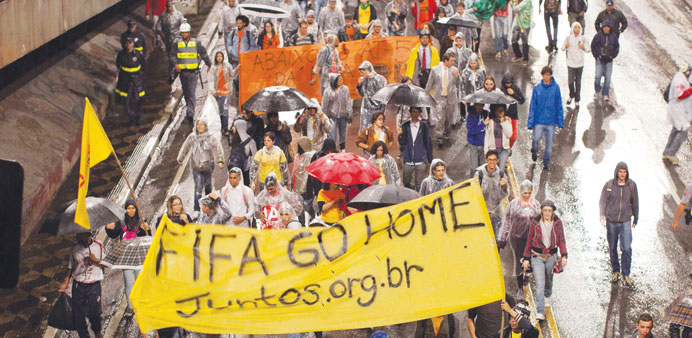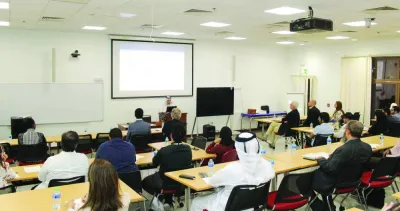Demonstrators protest against the upcoming 2014 FIFA World Cup Brazil in Sao Paulo, Brazil. Around 1,000 people protested against the holding of the world soccer tournament in the country in June and July. The protesters criticised the ‘excessive costs’ of the state-funded high budget event and the lack of a legacy in the sectors of transport and infrastructure, hospitals and public service.
Reuters/Sao Paulo
Brazil, looking to offset the carbon emissions generated by construction, travel and other activities related to hosting the 2014 Soccer World Cup, said it wants holders of United Nations-backed carbon credits to swap them for publicity during the games.
The World Cup begins June 12 and Brazil’s environment ministry said it has launched a programme to convince owners of credits to exchange them for publicity in official documents of the event.
The country, which is spending 26bn reais ($11.6bn) to prepare for the world’s top soccer tournament, has no plans to buy offsets in the market, even if carbon prices are at historical lows.
“We talked to some holders of credits and they were receptive to the idea of donating the credits”, said Eduardo Valente, an official working with the programme.
The government will accept only certified emission reductions (CERs) from Brazil-based projects of the UN’s Clean Development Mechanisms (CDMs). Companies that decide to join the programme will have to file a request for voluntary cancellation of the CERs with the executive board of the CDM.
Brazil and soccer’s governing body FIFA are running different projections for the World Cup’s carbon footprint.
FIFA concentrates mostly on the travelling by staff and spectators, prior and during the event.
The Brazilian government includes in its calculations all the construction work, both for the stadiums and infrastructure projects. Both have pledged to offset the event’s emissions, but FIFA plans to buy the credits.
The World Cup next year will be staged by a record number of 12 cities at newly built stadiums in 11 Brazilian states plus the federal district of Brasilia.
Teams, supporters and staff included in the organisation will be constantly moving around the cities, increasing carbon dioxide emissions compared to previous events in smaller countries with fewer stadiums.
Some of the venues are more than 5,000kms apart.
FIFA’s initial projection puts total emissions at over 2.7mn tonnes of carbon dioxide equivalent (CO2e).
Emissions in the previous Cup, in South Africa, stood at around 1.7mn tonnes.
Brazil’s government is to release its first estimate next month.
Ernesto Cavasin, president of Brazil’s Association of Carbon Market Companies (Abemc), said the offsetting programme is positive, but insufficient. “I didn’t see much stimulus to reduce emissions during the preparation”, he said. “Brazil should have pushed for green technologies on areas such as lightning, waste management and energy, and it could use credits from those projects to neutralise the Cup’s emissions”.



